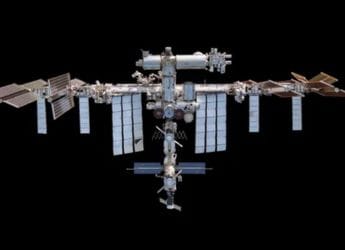- Home
- Science
- Science News
- Nasa Ladee Probe Finds Neon in the Moon's Atmosphere
Nasa Ladee Probe Finds Neon in the Moon's Atmosphere

Neon gas is commonly used in electric signs on Earth because of its intense glow.
Scientists have speculated on the presence of neon in the lunar atmosphere for decades.
"The presence of neon in the exosphere of the moon has been a subject of speculation since the Apollo missions, but no credible detections were made," said Mehdi Benna of Nasa's Goddard Space Flight Centre in Greenbelt, Maryland.
"We were very pleased to not only finally confirm its presence but to show that it is relatively abundant," added Benna, also from University of Maryland, Baltimore County.
There is not enough neon to make the moon visibly glow because the moon's atmosphere is extremely tenuous, about 100 trillion times less dense than Earth's atmosphere at sea level.
A dense atmosphere like Earth's is relatively rare in our solar system because an object has to be sufficiently massive to have enough gravity to hold onto it.
"It is critical to learn about the lunar exosphere before sustained human exploration substantially alters it," Benna noted.
Since the moon's atmosphere is so thin, rocket exhaust and outgassing from spacecraft could easily change its composition.
The Ladee confirms that the moon's exosphere is made up of mostly helium, argon and neon.
Their relative abundance is dependent on the time of day on the moon - argon peaks at sunrise, with neon at 4am, and helium at 1am.
The spacecraft conducted systematic measurements of these gases for seven months, which allowed the team to understand how these gases are supplied to the exosphere, and how they are ultimately lost.
It also revealed an unexpected source of some of the helium in the lunar exosphere.
This helium is being produced at a rate equivalent to about seven litres per second at standard atmospheric pressure.
"These discoveries highlight the limitations of current exospheric models, and the need for more sophisticated ones in the future," Benna concluded in a paper published in the journal Geophysical Research Letters.
Catch the latest from the Consumer Electronics Show on Gadgets 360, at our CES 2026 hub.
Related Stories
- Samsung Galaxy Unpacked 2025
- ChatGPT
- Redmi Note 14 Pro+
- iPhone 16
- Apple Vision Pro
- Oneplus 12
- OnePlus Nord CE 3 Lite 5G
- iPhone 13
- Xiaomi 14 Pro
- Oppo Find N3
- Tecno Spark Go (2023)
- Realme V30
- Best Phones Under 25000
- Samsung Galaxy S24 Series
- Cryptocurrency
- iQoo 12
- Samsung Galaxy S24 Ultra
- Giottus
- Samsung Galaxy Z Flip 5
- Apple 'Scary Fast'
- Housefull 5
- GoPro Hero 12 Black Review
- Invincible Season 2
- JioGlass
- HD Ready TV
- Laptop Under 50000
- Smartwatch Under 10000
- Latest Mobile Phones
- Compare Phones
- Vivo Y500i
- OnePlus Turbo 6V
- OnePlus Turbo 6
- Itel Zeno 20 Max
- OPPO Reno 15 Pro Mini 5G
- Poco M8 Pro 5G
- Motorola Signature
- Vivo Y50e 5G
- Lenovo Yoga Slim 7x (2025)
- Lenovo Yoga Slim 7a
- Realme Pad 3
- OPPO Pad Air 5
- Xiaomi Watch 5
- Huawei Watch 10th Anniversary Edition
- Acerpure Nitro Z Series 100-inch QLED TV
- Samsung 43 Inch LED Ultra HD (4K) Smart TV (UA43UE81AFULXL)
- Asus ROG Ally
- Nintendo Switch Lite
- Haier 1.6 Ton 5 Star Inverter Split AC (HSU19G-MZAID5BN-INV)
- Haier 1.6 Ton 5 Star Inverter Split AC (HSU19G-MZAIM5BN-INV)
-
 Apple Taps Google’s Gemini AI Models to Power Personalised Version of Siri and Apple Intelligence
Apple Taps Google’s Gemini AI Models to Power Personalised Version of Siri and Apple Intelligence
-
 Oppo Reno 15 Series 5G, Oppo Pad 5, and Oppo Enco Buds 3 Pro+ Sale in India Begins Today: Price, Offers
Oppo Reno 15 Series 5G, Oppo Pad 5, and Oppo Enco Buds 3 Pro+ Sale in India Begins Today: Price, Offers
-
 ISRO’s PSLV Suffers Second Failure as Third-Stage Glitch Sends Rocket Off Course
ISRO’s PSLV Suffers Second Failure as Third-Stage Glitch Sends Rocket Off Course
-
 NASA Confirms First Medical Evacuation in ISS’s 25-Year History
NASA Confirms First Medical Evacuation in ISS’s 25-Year History












